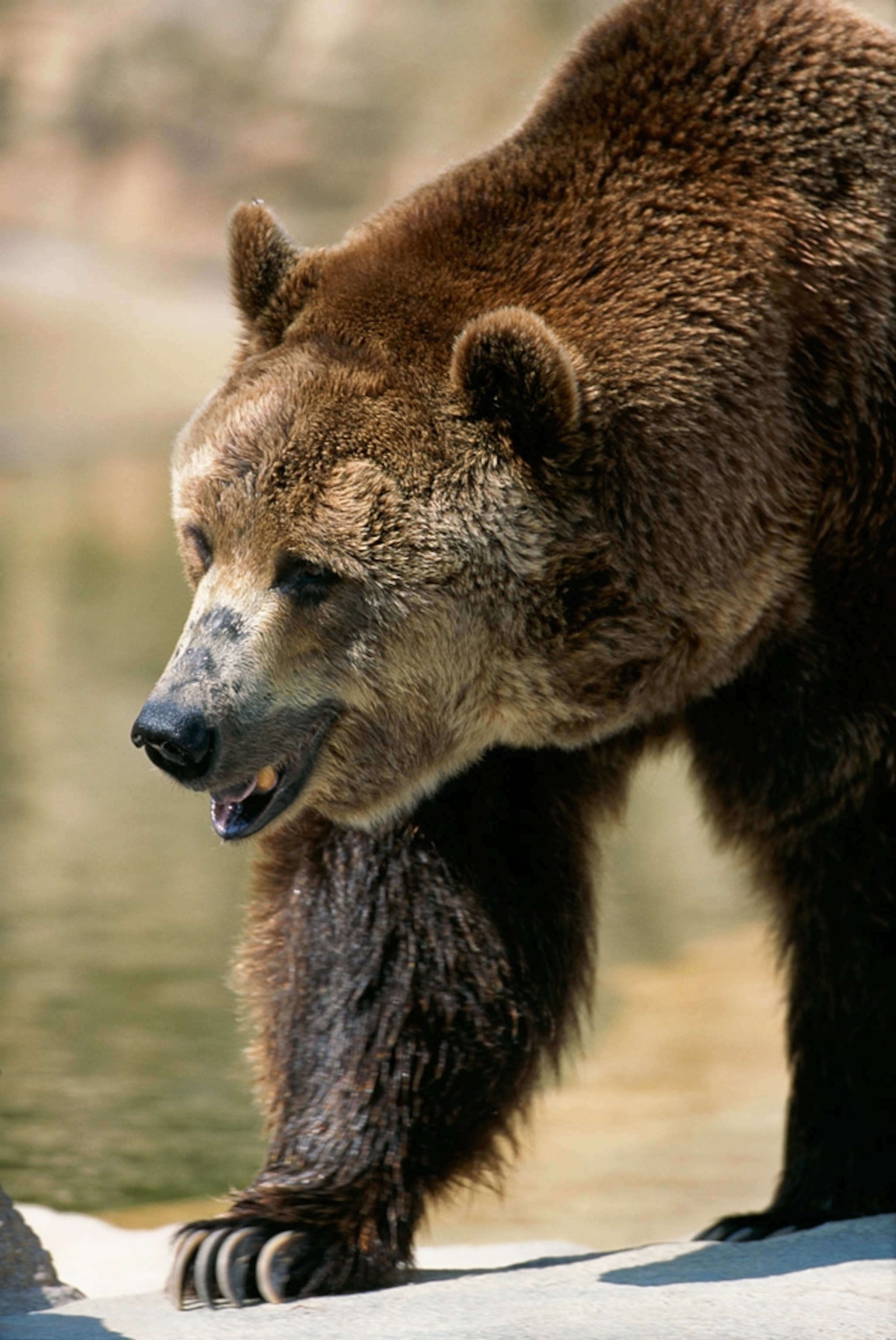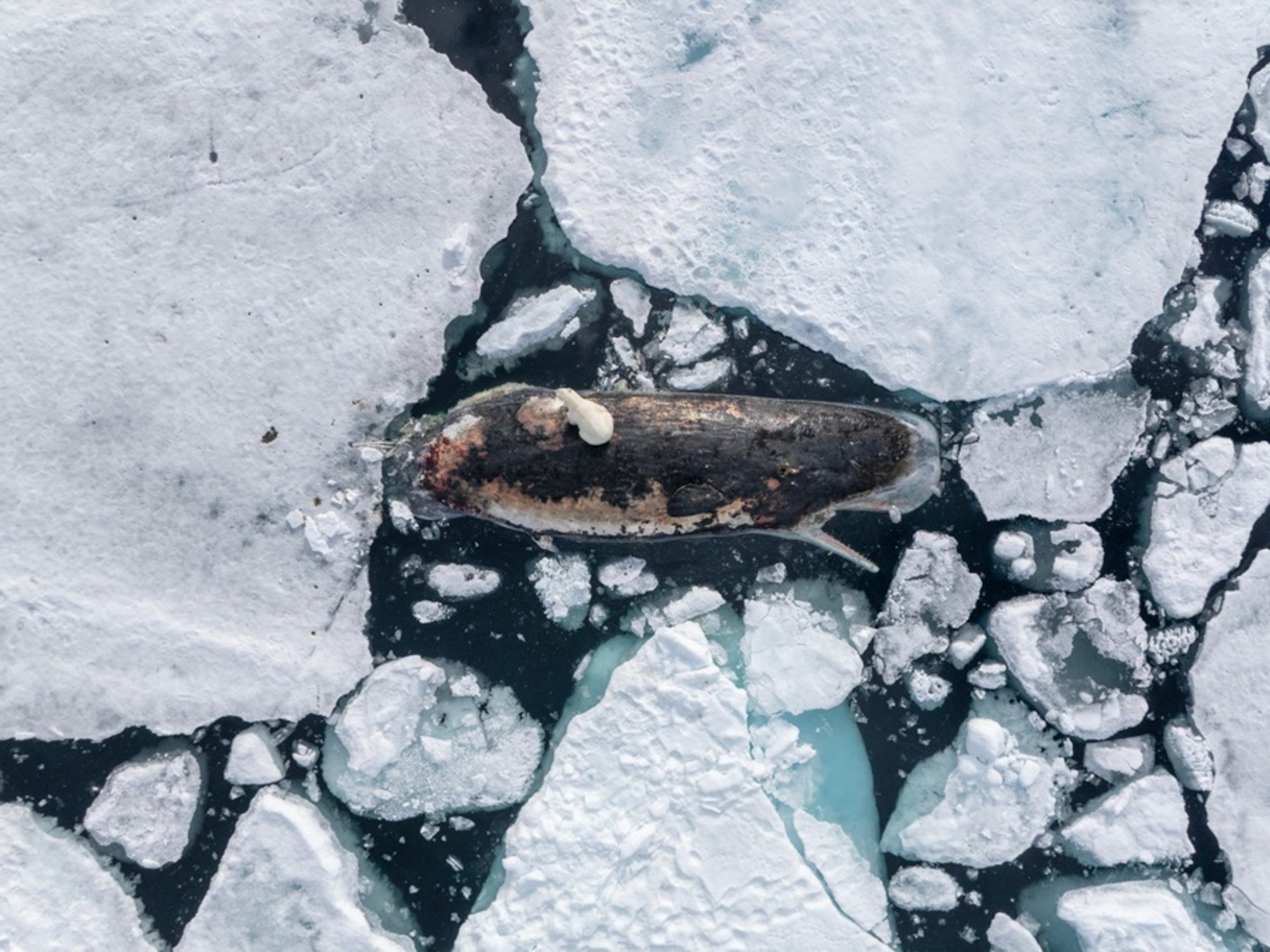
Grizzly Bears Moving Into Canada's Polar Bear Capital
There may now be two kings of the Canadian tundra—grizzly bear sightings are on the rise near Churchill, Manitoba, raising the small possibility of more grizzly bear-polar bear hybrids, a new study says.
There may now be two kings of the Canadian tundra—grizzly bears sightings are on the rise in the polar bear capital of the world, a new study says.
The preliminary report notes an increase in grizzly bear sightings in Wapusk National Park, just south of Churchill, Manitoba.
Thirteen grizzlies have been seen in the park between 1996 and 2008 in an area where grizzly sightings have never been confirmed before, researchers say. Four of the large bears were spotted in the summer of 2009.
It's unclear whether a viable population of grizzlies has established in the park, as males are known to disperse great distances from their home territories in northern Canada.
Experts also aren't sure what's causing the influx of bears, but it's more likely due to reduced hunting pressure than global warming.
(Related: "Bald Eagle, Grizzly: U.S. Icons Endangered No More?")
"There's been a real upswing in numbers," said study leader Robert Rockwell, a population ecologist at the City University of New York.
"We wanted to make the point that this is a new top-end carnivore on the scene."
Grizzly vs. Polar Bear
But speculation about grizzly-polar bear conflicts may be moot, since few polar bears will likely inhabit the northeastern corner of Manitoba—where the grizzlies were seen—by the end of the century. That's because the polar bears will follow Arctic sea ice as it retreats farther north.
"It's unlikely that we will still have polar bears in Wapusk National Park by the end of the century, given the current patterns of sea ice loss in Hudson Bay," said Andrew Derocher, a polar bear biologist at the University of Alberta in Edmonton, Canada.
A recently published model shows sea ice retreating from the area by the year 2050, which will lead to a decline in polar bears, he added. (See pictures of a warming Arctic.)
Even if a grizzly does encounter a polar bear, there likely wouldn't be an major tussle, said study leader Rockwell, whose research appeared in the February 2010 issue of the Canadian Field Naturalist. The journal publishes scientific papers by amateur and professional naturalists and field biologists.
"What top-end carnivores do is ... pretty much stay away from each other, like schoolyard bullies," he said.
There could be a scenario in which polar bear females clash with grizzly males as the females emerge from hibernation.
But in the Beaufort Sea, where University of Alberta's Derocher conducts his fieldwork, the two species den in overlapping areas with no fuss: The grizzly bear males come out of dens about a month after female polar bears have left. (See polar bear pictures.)
"Grolar Bear?"
And what of the prospect of grizzlies and polar bears begetting that epic beast, the "pizzly" or "grolar bear?"
To date, scientists know of only one hybridization event in the wild between the two bear species. In 2006 a hunter shot a grizzly-polar bear hybrid in Canada's Northwest Territories.
The possibility of the two species meeting each other "is going to be rare event, and I don't think it's going to be a really big deal," study leader Rockwell said.
However, the arrival of the grizzly may impact the park's ecosystem in other ways. For instance, Rockwell predicts the grizzlies could give polar bears an extra meal or two.
That's because a grizzly would rather abandon its kill than get in a skirmish with its much larger cousin, which can be attracted to the scent of the freshly killed prey. And grizzlies often take down caribou, prey that polar bears aren't fast enough to catch.
Whatever the outcome, Rockwell is curious to see what happens: "It's a neat living laboratory."





